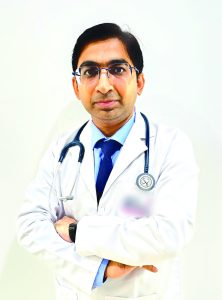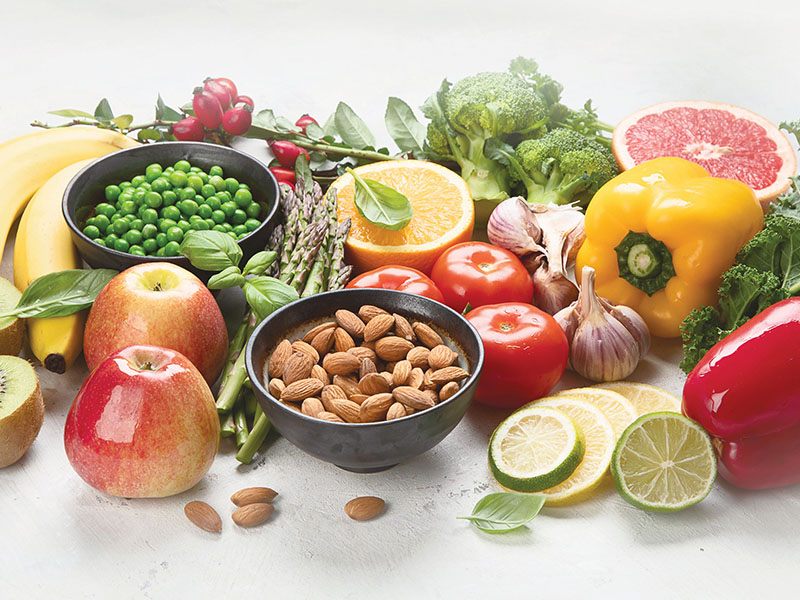Switching from carb-heavy to balanced diets

Dr. Tarun
As awareness about lifestyle diseases such as diabetes and obesity grows, the nutritional and health value of carb-heavy diets is being re-examined with medical experts calling for adoption of balanced, protein-rich diets, especially for children
For centuries, the Indian plate has been dominated by rice, rotis, and other carbohydrate-rich grain/food staples. But as awareness about lifestyle diseases such as diabetes and obesity grows, the nutritional and health value of carb-heavy diets is being re-examined with medical experts calling for adoption of balanced, protein-rich diets, especially for children.
A recent ICMR-INDIAB study published in Nature Medicine (October) covering 30 states and Union territories found that 62 percent of calories consumed daily by Indians come from carbohydrates, while protein intake is a mere 12 percent. The survey highlighted that carbs dominate Indian plates mainly in the form of white rice in the South, East, and Northeast, and wheat flour in the North and Central regions. Sugar intake is also alarmingly high, with 19 states and Union territories exceeding safe limits.
A child’s food plate in India typically includes large servings of rice or roti, a small portion of dal, minimal vegetables and proteins such as milk, eggs, and pulses. Over time, this dietary imbalance has led to a rising number of children suffering micronutrient deficiencies and poor muscle-to-fat ratio. According to the World Health Organization (WHO), diets overly dependent on refined carbohydrates such as polished rice and wheat lead to insulin resistance, obesity, and a greater risk of non-communicable diseases (NCDs). Alarmingly, India ranks among the top 5 countries globally for childhood obesity and type 2 diabetes onset in teenagers.
Dr. Tarun Singh, a Gurugram-based consultant pediatrician and neonatologist at Kalpavriksh Healthcare, Pediamedics Healthcare and Bhagwan Das Hospital, Sonipat, spoke to PW’s Kiran Balimane about ways and means parents can switch from carbs-heavy to balanced diets to promote children’s physical well-being. “Children today consume far more refined carbohydrates than their growing bodies need, and far less protein and fibre than they should. This imbalance not only affects muscle development and immunity but also increases the risk of obesity, insulin resistance, and early-onset lifestyle diseases. Switching to more balanced, protein-rich diets is essential to build children’s long-term metabolic health and resilience,” says Dr. Tarun Singh.
 Slow carbs
Slow carbs
Eliminating rice or roti from children’s meals is not the solution. The key lies in choosing the right carbs and balancing the food plate.
Refined rice and wheat have a high glycemic index (GI), which rapidly raises blood sugar levels, leading to energy spikes and sudden drops in energy. In contrast, unpolished rice, brown rice, millets, and multigrain rotis digest slowly, provide fiber, and improve satiety.
For children, switching to slow carbs such as brown rice, millets and multigrain rotis stabilizes appetite, supports gut microbiome health, and prevents childhood obesity. The National Institute of Nutrition (NIN) advises that carbohydrates should constitute 50-55 percent of daily calories, not 70 percent as commonly practiced.
Protein
The ICMR-INDIAB study highlights India’s low protein consumption — only 12 percent of total calorie intake. This explains the rising rate of protein-energy malnutrition in children, including those in middle-class households.
Children require 1-1.5 gm per kg per day of protein for optimal physical growth. But several dietary surveys reveal that most school-age children barely meet half this requirement. Pediatric nutritionists recommend including natural protein sources such as lentils, chickpeas, soy, peanuts, seeds, and millets (plant-based) and milk, curd, eggs, lean meats, and fish (animal-based) in children’s diets. WHO recommends that a balanced food plate should include ¼ protein, ¼ whole grains, and ½ fruits and vegetables.
The ‘fat’ factor
The ICMR-INDIAB study also found that saturated fat intake exceeds safe limits in several states, especially in the north. Refined oils, ghee-laden breads, and deep-fried snacks are the norm, while healthy fats such as omega-rich nuts and cold-pressed oils are rarely included.
For children, moderate intake of healthy fats such as avocado, eggs, nuts, seeds and fatty fish is essential for brain development. Avoid fried food as it increases lipid levels and inflammation from young age.
Rediscovering millets
Millets are rich in iron, calcium, fiber, antioxidants, and essential amino acids — nutrients that can bridge the dietary gap. They improve gut health, prevent constipation, and enhance sustained energy in children.
States such as Karnataka and Gujarat have reintroduced millet-based mid-day meals in public schools. The Centre’s POSHAN Abhiyaan is also slowly incorporating these grains in the mid-day meal scheme.
“India’s carbs-rich diet, once a symbol of affluence, is now a double-edged sword. It is one of the prime causes of rising obesity and diabetes in children. Parents must take the lead in shifting to balanced meals and teaching children mindful eating habits. It’s time India’s love for rice and roti evolves — not to abandon tradition, but to include balance, diversity, and healthy nutrition,” says Dr. Singh.
 Prescription for a healthier plate
Prescription for a healthier plate
- Follow the ‘Half-Plate Rule’ – half fruits and vegetables, one-fourth whole grains (preferably millets/brown rice), and one-fourth protein.
- Include at least one protein-rich item such as milk, egg, paneer, dal in every main meal.
- Add color to the plate – more greens, yellows, and reds; they provide healthy micronutrients.
- Replace refined cereals with unpolished or multi-grain alternatives.
- Reduce salt and sugar intake




 Prescription for a healthier plate
Prescription for a healthier plate










Add comment